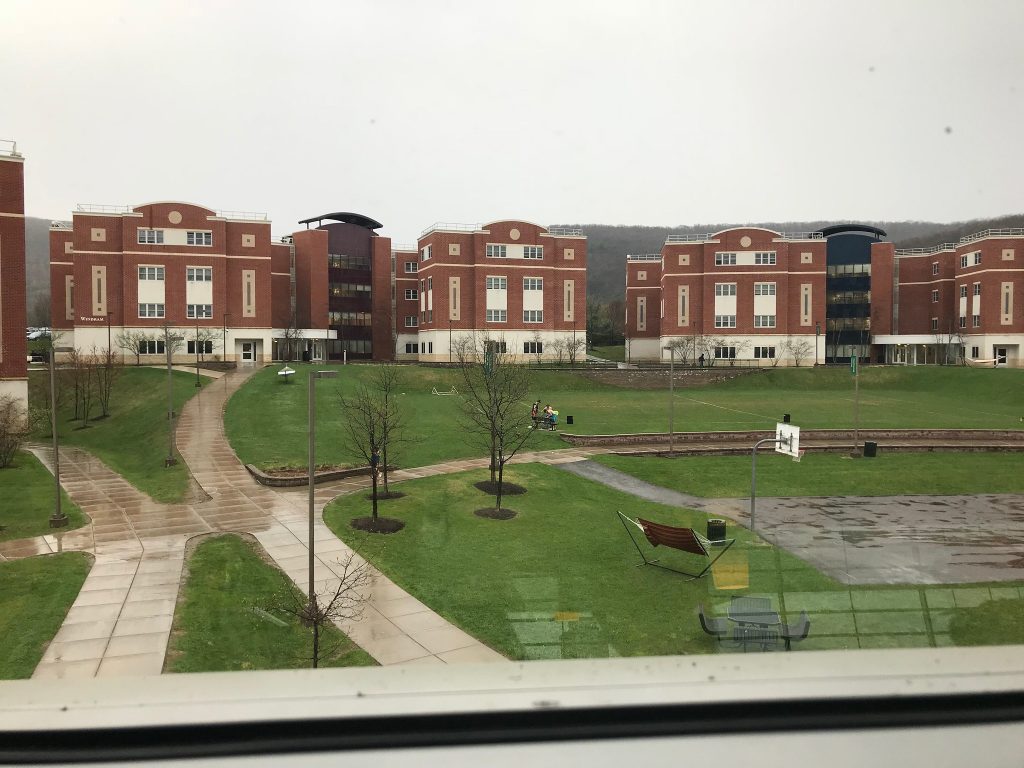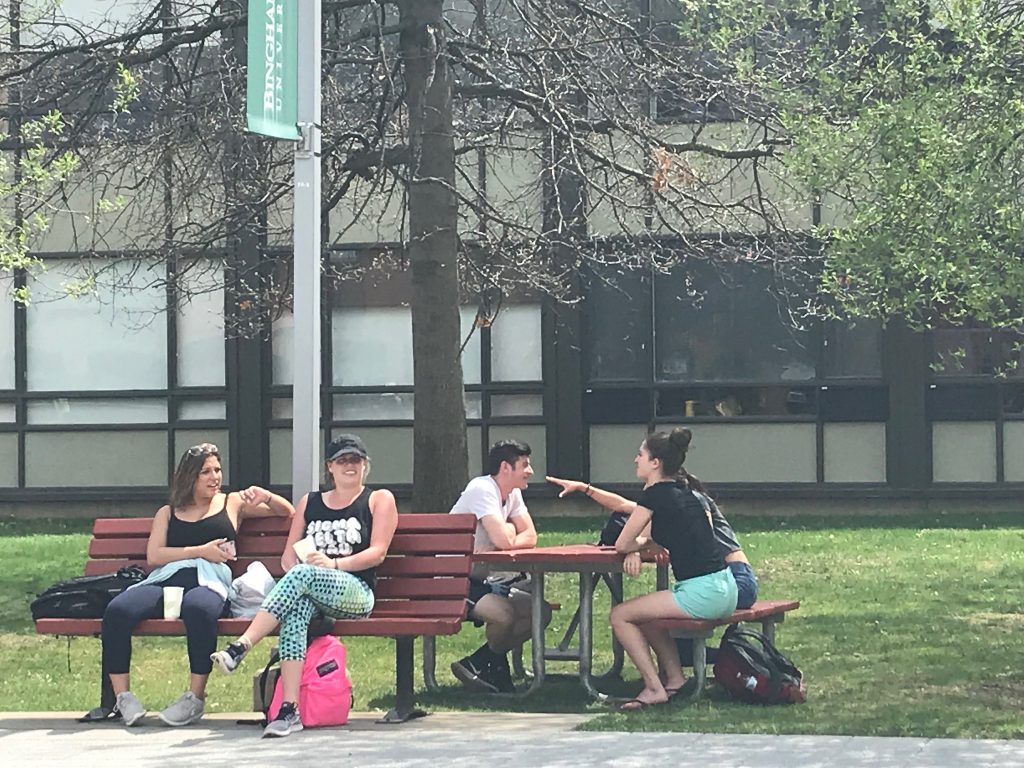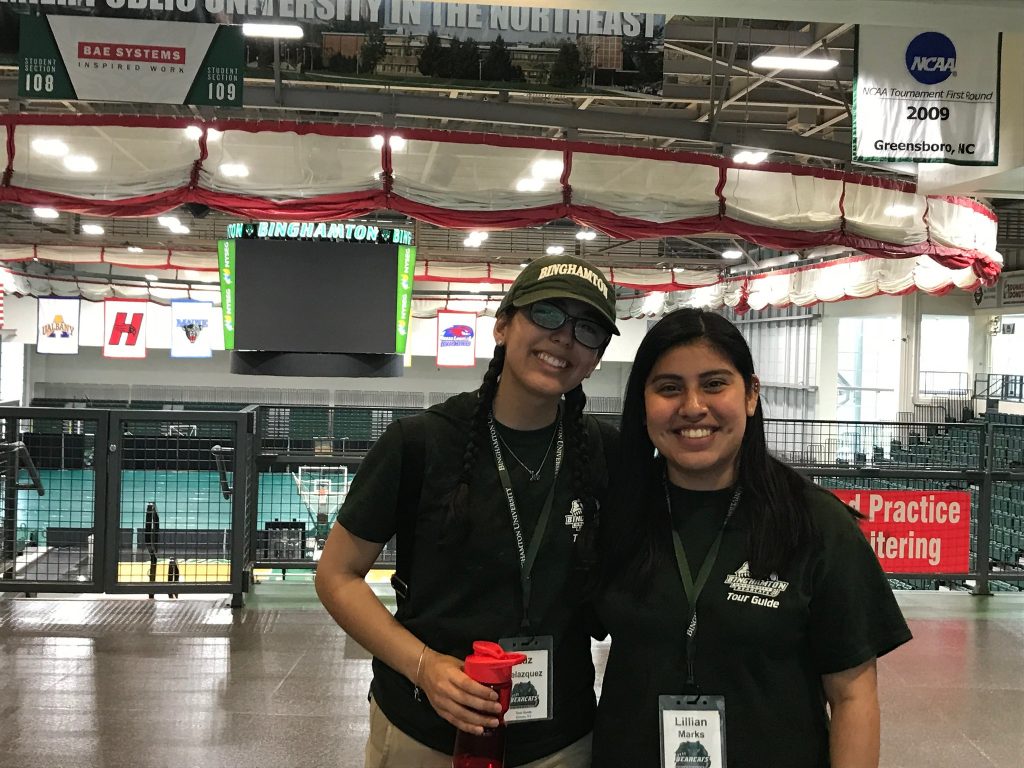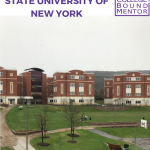Binghamton University- The State University of New York

Our visit to Binghamton University demonstrated just how innovative this school of 14,000 has become. Designed for Gen Z, Binghamton offers innovative classrooms. Faculty emphasizes interactive learning over shared knowledge, collaboration over competition, and encourages research beginning freshman year.
Academics
The University consists of six schools: the Harpur College of Arts and Sciences, the College of Community and Public Affairs, the Decker School of Nursing, the School of Management, and the Thomas J. Watson School of Engineering and Applied Science. The new School of Pharmacy and Pharmaceutical Sciences opens this summer, offering a Doctor of Pharmacy Degree.
Some highlights of our tour included the sprawling, five building Innovative Technologies Complex (ITC) which comprises buildings for Bioengineering, Engineering and Science, The Center of Excellence, and Smart Energy. These buildings feature new state-of-the-art laboratories and clinical research, as well as start-up suites for new companies and even incorporate a multi-climate greenhouse —one of the largest teaching and research facilities of its kind, which is divided into tropical, temperate, alpine and desert zones.
We learned about The Freshman Research Immersion (FRI) and Summer Research Immersion (SRI) programs which provide year-long authentic research experiences in sciences and engineering. In these programs, streams of thirty students are able to dive into original research as freshmen. One stream looked at smart energy while another group worked with a faculty member who invented the lithium battery. Approximately a third of all students participate in research on campus ranging from exploring ways to make electronic devices smaller and faster to Lyme disease to apocalypse fiction to teenage drinking and its link to addiction. Binghamton spends $39.8 million on research of which 10% is funded by corporations who reach out to faculty seeking solutions to specific problems.
Finally, we explored the Center for learning and teaching. We saw technology everywhere including the all white-board walls where students walked around creating presentations by writing on the walls. Once the presentations are complete, a spray of water washes them clean for the next user. Students commented on the sense of community and empowerment they feel when learning in this shared and progressive manner.
Social Life

Binghamton students live in one of six Residential Communities with a faculty member or fellow residing in each community. The active student government, providing countless opportunities for leadership, facilitates everything at Binghamton. Even the bus system is run and funded through a student organization! One student we met with from Pennsylvania is the treasurer for Autism Speaks, while Cat, a nursing student from NY, manages all of the dorm community governments and is working on ideas for developing future leaders. Leo, from Taiwan, serves as a leader for international ambassadors, volunteers with the American Red Cross, and takes advantage of the area for hiking.
The students describe Binghamton as academically competitive, but say students like to have fun. 88% of students participate in one of the 350 clubs and organizations, including Greek life (professional and social), or on one of the 21 Division 1 sports teams. Green space is abundant at Binghamton and the school hosts an active Outdoor Pursuits club. Late Night Binghamton offers countless activities, which can include arts and crafts, laser tag, a mechanical bull, and paintball for students not into party life.
Student Body

Accepting, Down to earth, Substance vs. surface, Practical, Value-oriented, First -generation, Friendly, Inclusive, Community-oriented
Binghamton Students are empowered to take advantage of the resources available to them. We met Glenn, who asked (and received!) permission to shadow the School’s president for a day. We also spent time with an alumnus who worked with Bob Mueller exploring and eventually meeting with students concerning what schools do and don’t do right for DACA students. We also met with a student who restored an art piece. We finished our day by meeting with students who were hosting a happy hour for professors. The students we met were engaged, happy and energized.
Surrounding Area
The campus is spread across 930 acres on a wooded hillside above the Susquehanna River. An on-campus Nature Preserve boasts 190 acres of protected forest and wetlands with hiking/biking/running trails and a six-acre pond. Downtown Binghamton offers a world-class opera company, a symphony orchestra, movie theaters, clubs, incredible restaurants, bars and professional hockey and baseball teams.
Admissions and Financial Aid
Fall 2018 data
- Male/female ratio: 50%/49.6%
- High school GPA mid-50%: 92–98/3.4-3.9
- SAT (mid 50%) Math: 650-740 Evidence-based reading and writing: 650-715
- ACT score mid-50%: 27–32
- Freshman retention rate: 92.1% (national average 73.3%)
- 4-year graduation rate, 70%, 6 year, 80%
- AP credit given for 3 or higher
- 28.9 % students of color
- 15.9% International students
- Students come from 50 states and 100+ countries
Admissions to Binghamton University is competitive and has a similar academic class profile to that of the University of Maryland, however it is slightly easier to get into from out of state. In fact, our admissions counselor said they are actively seeking students from out-of- state. Admissions to specific programs can be limited. Binghamton offers many programs including honors, accelerated, and dual degree. There is also a Downtown Binghamton campus which houses the College of Community and Public Affairs and includes the popular Human Development Major.
Once accepted, Binghamton offers excellent support for all students through programs such as the Freshman Writing Seminar. Binghamton takes this support one step further to make sure first-generation, international, and students with learning or physical disabilities find the resources they need to be successful.
All students are considered for scholarships. Criteria for Binghamton scholarships include academic merit, major, program participation and very often financial need, as determined by the Free Application for Student Aid (FAFSA).
Summary
Binghamton University offers students an excellent collegiate experience. Based on retention rates and graduation outcomes, it is clear that Binghamton has found the secret balance of challenging students academically while keeping them engaged and happy.
Undergraduate Admissions Office
P.O. Box 6001
Binghamton, NY 13902-6001 USA
607-777-2171


